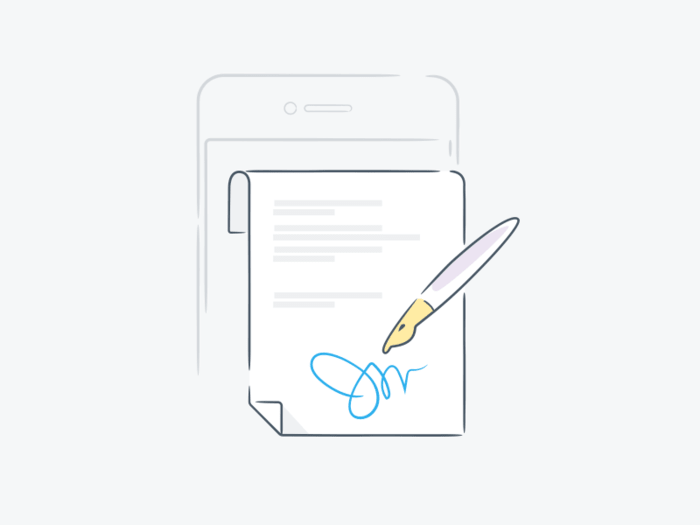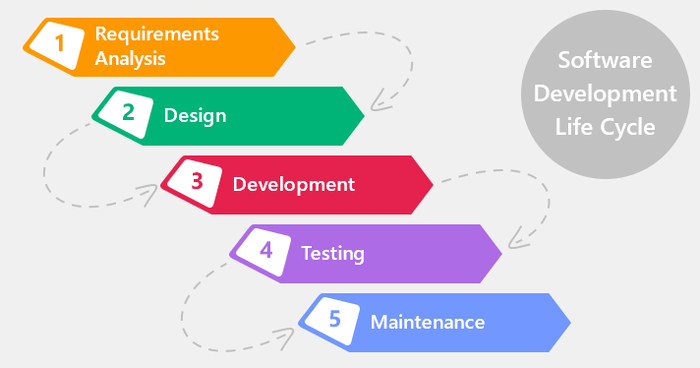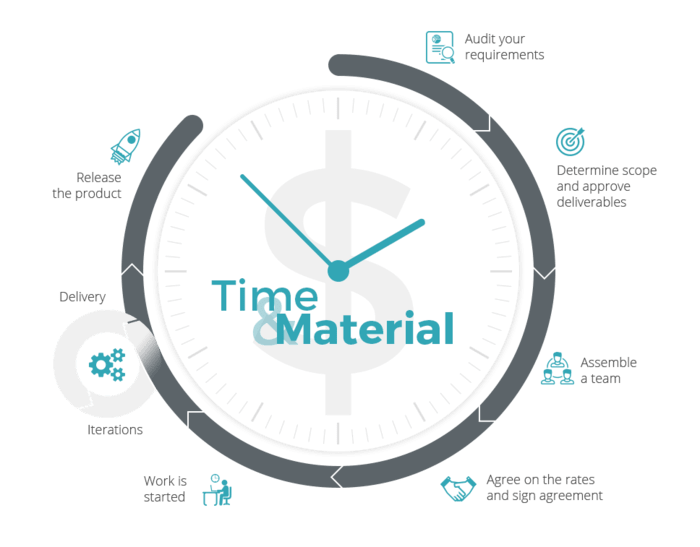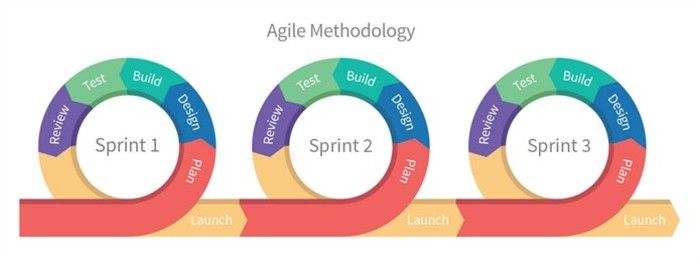Time and Materials vs Fixed Price Contracts
Published: July 9, 2024
8 min read
In this article, you'll learn:
1
🔏 What Is a Fixed Price Contract?
2
💸 Time and materials pricing: everything you should know
3
👍 4 tips on choosing a pricing model
4
💡 Conclusion
Are you one of them? I mean, one of the customers who pay more just because he doesn't have a proper info. Luckily, this article is going to end this. Read on to find out which pricing model to choose and how Annie Edson Taylor relates to this matter!
Today we are going to discuss the topic that nobody likes. We are going to talk about money. Your hard-earned money. Moreover, we won’t try teaching you how to “double your income with these 3 simple hints in 30 days” or other non-working stuff that is here and there on the Internet.
However, if you carefully use given below information, it will definitely bear fruit in the future (if you want specifics: you will notice the first visible results when striking the next bargain).

How to sign a lucrative contract? That's what you're going to find out! (image by Kemal Sanli)
So, it’s time to get the insights on two main pricing models that determine the key characteristics of your relationship with any software development company. Debates “time and materials vs fixed price contracts” seem to be as insoluble as “Android vs iOS." Nevertheless, choosing a pricing model is the issue you shouldn’t ignore. Why? Because it predicts answers to the 2 main questions that every client has:
- How much will it cost to build an app?
- How good will be the result?
Seems important enough, doesn’t it? Let’s review and compare both software development pricing models and find out which one is the most acceptable for your business project!
🔏 What Is a Fixed Price Contract?
Do you like travelling? I bet you do. Imagine that one sunny day you decided to go on a vacation. Your choice fell on a picturesque country that is pretty far away from the place where you live at. Therefore, a plane seems like a perfect way to get there. You buy a ticket (the price of which is fixed) and fly from your homeland directly to the resort without a possibility to change plane’s route. This is how fixed price approach looks like.
If to talk business, the fixed price model is the pricing strategy based on rigid planning. To have a deal both parties (a client and a vendor) should agree on the predetermined price of a project and explicitly define each other’s responsibilities before the work begins.

Image by David de la Iglesia
If you look briefly, it may seem like a perfect solution for any customer: you definitely know how much you are going to pay and what result you expect to achieve. It allows to set pretty tight deadlines (as the scope seems to be quite well-planned), stay aside the process and let developers do their job, so the biggest part of the responsibility lies on them.
However, there are many risks behind this model, so don’t hurry to make a final choice. In fixed priced contracts the degree of uncertainty is high, so developers include a so-called “buffer” - additional hours to solve possible issues, which haven’t been described in the scoping document.
Fixed price contracts have their own advantages, however, it's not the best choice for outsourcing software development.
We will come back to the pros and cons of fixed price contracts a little later. Before that, let’s take a look at the Waterfall model, which is the mainstay of the fixed pricing strategy.
Waterfall model: what is it and how does it work?
Waterfall is a software development methodology. According to this approach, a development process is divided into several distinct stages, which flow consistently. You can’t move to the next one if the previous is still undone.

That's how the Waterfall development process looks like
Moreover, the Waterfall approach requires perfect planning. When the development has already begun, it’s almost impossible to apply any changes. The expression “measure twice and cut once” is just a perfect description of the Waterfall methodology. What are the risks for you? Let me explain.
Have you ever heard about Annie Edson Taylor? The woman has made herself famous by going over the Niagara Falls in the barrel. Ironically, using the Waterfall methodology when building an app has much in common with Annie Taylor’s adventure:
- Firstly, planning is the most important part. In both cases it literally means everything. Lack of planning is almost a guarantee of failure here.
- Secondly, there are only starting and finishing points, and no intermediate ones. You shouldn’t try it if you aren’t at least 95% sure in your success.
“If it was with my dying breath, I would caution anyone against attempting the feat.” – said Annie Taylor on her experience with the waterfall.
What are the pros and cons of fixed price contracts?
As you have already learned, fixed price contracts are risky enough. They are not very well fitted to the outsource software development, which is dynamic and often hardly predictable rather than stable and easy to foretell.
However, some people still use this approach so it would be unfair to leave it without any review. Let’s underline the main advantages and disadvantages of the fixed price model once more before moving further:
Advantages
- You know the exact final price of the whole project. It means you are protected from extra expenses after making a deal.
- This type of contracts includes strict deadlines, so your development team is highly motivated to meet them.
- You know the status of your project because everything has already been planned.
- No need for supervision since all project details are mentioned in the contract.
Disadvantages
- You will probably overpay (about 15-40%) as your contract presupposes some risks. In the time & materials model you pay for what you get; here you can pay more and get less.
- Minimal flexibility is another consequential issue. All additional features and unpredicted changes are difficult to implement cause the fixed price strategy leaves no room for maneuvering.
- This approach requires a long preparation stage, which may significantly slow you down.
- Poor communication can also play a cruel joke. The final product may not meet your expectations.
💸 Time and materials pricing: everything you should know
However, there is always an alternative. In our case, it’s so-called “time and materials” approach. How does it work? In a nutshell, you pay the actual cost of the work, which is usually measured in hours. The development process length is not so predetermined and the whole project planning is not so strict and immutable.
There might already occur the objection from your side: “If there are an hourly payment and no tough deadlines, the development process may turn into infinity”. Is it true? On the contrary, this model presupposes tight cooperation with the client during development, so you are able to handle the process according to your own interests and budget. In fact, you save even more than using fixed price contracts.

Time and materials model is quite simple to understand
If coming back to our journey topic, time & materials methodology can be compared to travelling with your own car. Actually, this comparison perfectly outlines all the basic features of this pricing strategy:
- Firstly, you have more control over the process: you can make changes to your project just like changing your route while travelling by car.
- Secondly, you know what every single cent is paid for. Pretty similar to driving where you pay for the exact amount of gasoline.
You already know that fixed price contracts are based on the Waterfall methodology. For time and materials model developers use the Agile approach. Let’s take a look at how it works.
What is the Agile methodology?
This approach is all about flexibility. It’s based on creating a roadmap (a plan, in other words) of your project and spliting a development process into “sprints” - time-boxed phases with a defined duration and a running list of prioritized tasks. At the end of sprint developers usually prepare a report on what has been done during this phase and update the roadmap. If some tasks left unfinished, they would be reorganized, reprioritized and included to the next sprint.

That's how the Agile development process looks like
As you can see, this model requires client more involvement into the process after signing the contract, but it also allows to properly review and evaluate development.
Advantages and disadvantages of the time and materials strategy
In our experience, most app development companies prefer to work using the time and materials pricing model. It allows creating user-friendly products that are suitable for the modern mobile market as good as possible.
You have already learned how this strategy works, so let’s summarize the most important time and materials contract advantages and disadvantages:
Advantages
- Due to the high flexibility, you can implement changes, shift the focus or adjust the project to the evolving requirements as you go.
- There is no overpay because your expenses include only actual cost of work performed.
- The model allows achieving the best result since the final product is built in tight cooperation with a client.
- Easy supervision lets you regularly check how much has been done on your project.
Disadvantages
- Deadlines may change as the roadmap is updated so it harder to predict when exactly the product will be completely ready.
- It’s also difficult to foresee the final budget since the overall cost can noticeably change (depending on the client’s wishes) during the development process.
- This approach expects deep involvement of a client, which requires time and efforts from your side.
👍 4 tips on choosing a pricing model
Now you have learned enough to make your own conclusion about who is the winner in the t&m vs fixed price model competition. However, I want to share with you a few more hints just to be sure you won’t slip up. Here are some questions you might still have and answers for them.
❓ When to use a fixed price contract?
✅ It may be justifiable to apply the fixed price model to your project when you have exactly (I literally mean exactly) estimated the volume of work and prepared the well-detailed documentation with fixed timelines and the unalterable scope, which is almost impossible for startups. Thus, this strategy may suit a short (up to a month) and completely thought out project.
❓ Why does the time and materials approach often turn out to be cheaper for a client since it has no tight budgeting?
✅ When using this model you pay only for the amount of work done in fact. Neither a cent more, nor a cent less. Fixed price contracts always include about 15-40% of additional hours (counting from the overall project duration) for solving issues that may occur during development. Whether it’s used or not - you still pay for it.
❓ Which one should I choose to get an app of top-notch quality?
✅ Our experience shows that the time and materials model is more appropriate for building a successful app. Why? Firstly, this strategy allows to respond the changing requirements dynamically. Secondly, a development process flows in the deep cooperation with you; thereby, you will definitely like the result.
❓ I need to start my project as soons as possible. What pricing model should I choose?
✅ Due to the differences between fixed price vs time and materials contracts the last is the winner here. Again. It doesn’t require long preparation stage as a lot of issues can be figured out and solved on the go.
💡 Conclusion
Don’t rush when thinking about a pricing model for your project. Take your time. Think independently. And then choose time and materials one.
Joke.
It’s up to you to decide which strategy fits your ideas best. However, we shared our experience and hope that it will come in handy for you. If your project is short and thought out to the details, you may consider using fixed price approach. However, time & materials strategy is a good compromise in any other case.
Any questions left? Challenge our team and we will come up with recommendations on your project.
Take your chance and good luck!
Our clients say
![Stormotion client Pietro Saccomani, Founder from [object Object]](/static/40e913b6c17071a400d1a1c693a17319/b0e74/pietro.png)
They make the whole business work for us, and their improvements are fundamental to our operations. They’re reliable, honest, and willing to try new things that will help us. We appreciate how flexible and easygoing they are.
Pietro Saccomani, Founder
MobiLoud
Was it helpful?
Read also



